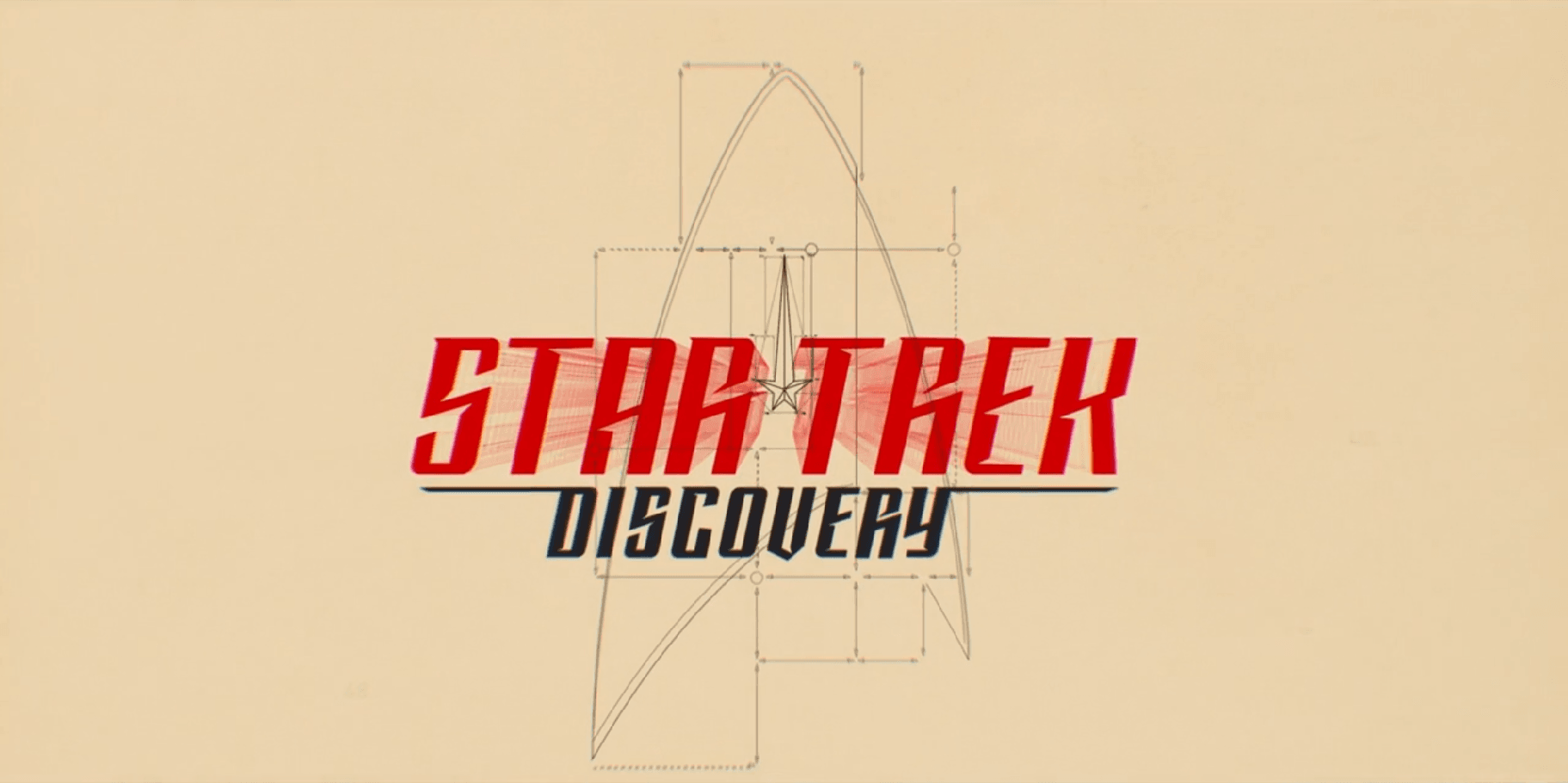
Welcome as always to ‘Final Frontier Friday’. And here it is. Our countdown is finally over and ‘Star Trek: Discovery’ has arrived! So pull up a chair and join us while we take a long awaited look at ‘The Vulcan Hello‘ and ‘Battle at the Binary Stars’, which together make up the two-part premiere of ‘Star Trek: Discovery’.
Now, before we begin, I’d like to take a moment to remind you that yes, this article will be chock full of spoilers. I don’t usually do this, but I also don’t usually cover episodes that aired less than a week ago. So…
You have been warned.
In 2005, ‘Star Trek: Enterprise‘ was cancelled after a four season run. This didn’t just mark the end of the show, but the end of televised ‘Trek’ (for the foreseeable future, at least) after eighteen years. With no new film or TV projects in production, the next few years would see the departure of Rick Berman and the rest of the creative forces that had maintained stewardship of the franchise since Gene Roddenberry’s health began to decline at the dawn of the ’90s. For the first time in over twenty years, the future of ‘Star Trek’ was truly uncertain. Not that there was any serious doubt that it would continue, but “When?” and “How?” were suddenly very serious questions.
Over the years, a variety of ‘Trek’ pitches would be made, from a movie following an all-new crew at the height of the Romulan War to an animated web series that would have explored a dystopian (by the standards of ‘Star Trek’, at least) twenty-sixth century. None of these ever gained any serious traction, though. Eventually, the decision was made to proceed with a feature film reboot, helmed by JJ Abrams. Though financially successful, this film and its sequels would prove extremely divisive within ‘Trek’ fandom, with even those who enjoyed the reboot conceding that the franchise has always been at its best on television.
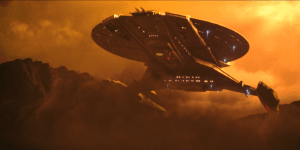
By 2015, preliminary work was quietly underway on a new ‘Star Trek’ series, with a formal announcement coming in early 2016. The show was to be produced by Alex Kurtzman, who had previously acted as a co-writer on the reboot films, with veteran ‘Trek’ writer Bryan Fuller serving as showrunner. Despite Kurtzman’s involvement, the new show would see ‘Star Trek’ return to the so-called Prime Timeline, that is to say, a world in which the reboot movies (mercifully) never happened. Fuller’s involvement, though, was not meant to last. Though he was instrumental in shaping the narrative arc of the first season, Fuller would ultimately step down as showrunner in late 2016, opting instead to focus on other projects to which he was attached (particularly ‘American Gods’). Fuller’s ouster came in the wake of several production delays, which resulted in the show’s premiere being pushed farther and farther into 2017, despite an initial goal of launching the series within a few months of the franchise’s fiftieth anniversary.
With Fuller’s departure, it fell to frequent Fuller collaborators Gretchen Berg and Aaron Harberts to take the helm. Using the work Fuller had already done as a guide, the two set out to keep the show as close to his original conception as possible, though not without putting their own stamp on it. While a comparison of Fuller’s original intent and the show as aired is unfortunately impossible based on the information that is publicly available at this time, it should make for some fascinating tell-all books once the dust settles. In any case, Berg and Harberts were able to get ‘Discovery’ up and running and across the finish line, with the show making its long awaited debut on September 24th, 2017. So how did the first ‘Star Trek’ series in over a decade fare? I’m sure you have your own ideas by now, but if you want mine? You’ll just have to keep reading.

We open on a Klingon – T’Kuvma – rallying his troops against Starfleet and urging them to “remain Klingon.” We then join Captain Phillipa Georgiou and first officer Michael Burnham on an away mission to a drought-ridden planet. The two are there to repair the planet’s water table, sparing the natives from extinction. When an incoming storm interferes with their ability to contact their vessel – the USS Shenzhou – Georgiou leads Burnham into the open desert, where the two walk a pattern in the sand that is soon revealed as a Starfleet delta. This signal reaches the Shenzhou, which enters the atmosphere and beams the two aboard.
We rejoin the Shenzhou on a mission to investigate a damaged subspace relay at the edge of Federation space. All indications point to the relay having been damaged in an attack, but with little evidence of who might be responsible or why. Burnham and science officer Saru suspect that it may be a trap, intended to lure a Federation vessel to a system. Saru spots a mysterious object in a sensor dead zone located in an accretion disc around the nearby binary star. Georgiou is determining to investigate, but sensors are useless and they don’t have a shuttlepod maneuverable enough to navigate the disc. Burnham volunteers to make a flyby using a thruster suit, though the radiation levels mean she’ll have to be there and back in twenty minutes. Burnham reaches the object – which appears to be very old, made of stone and metal – and lands on it to get a closer look. This triggers some kind of automatic response, and she soon finds herself face to face with a Klingon warrior. When the Klingon attacks, Burnham manages to kill him and just barely gets clear of the scattering field in time for the Shenzhou to beam her to safety.
Back on the Klingon vessel, we find T’Kuvma conducting a funeral for the slain warrior. Through this, we learn that the object was some sort of beacon, and the dead Klingon is dubbed the Torchbearer. Back on the Shenzhou, Burnham is unconscious in sickbay, recovering. While she does so, we get a flashback to her upbringing on Vulcan as the ward of Ambassador Sarek. We also learn that her biological parents were killed in a Klingon raid when she was very young, creating emotional issues as understandable as they are undesirable in Vulcan society. When Burnham awakes in sickbay, she ignores the doctor’s objections and heads to the bridge to warn Georgiou. Given Burnham’s medical state and the fact that the Klingon Empire has largely kept to itself for the past century, Saru voices skepticism. Georgiou, however, senses her conviction and orders a red alert. The Shenzhou locks Phase cannons on the beacon in an effort to draw the Klingons out. Almost immediately, a massive Klingon ship decloaks and Georgiou contacts Starfleet Command.
T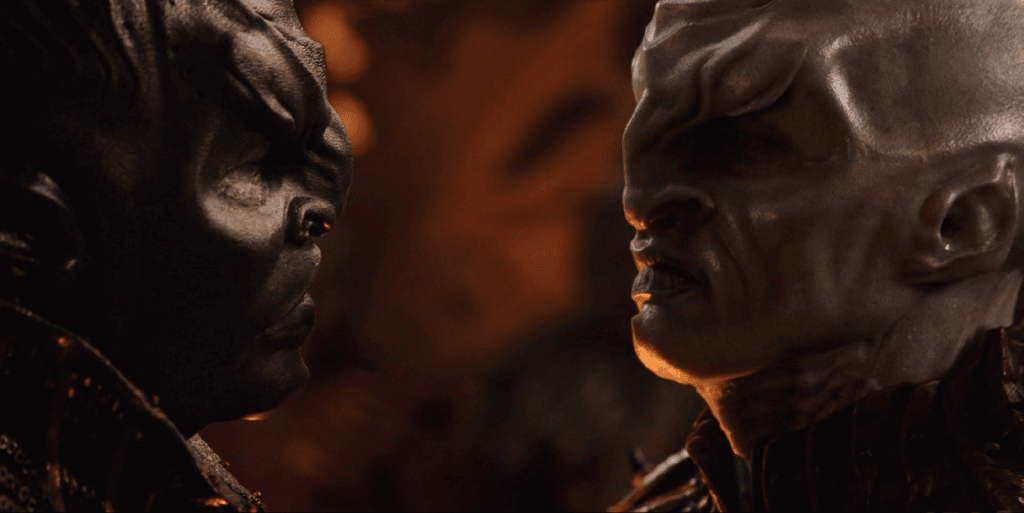 he Klingons ignore the Shenzhou’s hails while T’Kuvma selects a new Torchbearer, the albino Voq. On the Shenzhou, Saru urges a withdrawal, though Burnham thinks that is no longer an option. Meanwhile, Georgiou speaks with Admiral Anderson, who orders the Shenzhou to maintain position and “do nothing, absent provocation” until reinforcements arrive. Suddenly, the Klingon beacon emits a blinding light along with some sort of subspace signal.
he Klingons ignore the Shenzhou’s hails while T’Kuvma selects a new Torchbearer, the albino Voq. On the Shenzhou, Saru urges a withdrawal, though Burnham thinks that is no longer an option. Meanwhile, Georgiou speaks with Admiral Anderson, who orders the Shenzhou to maintain position and “do nothing, absent provocation” until reinforcements arrive. Suddenly, the Klingon beacon emits a blinding light along with some sort of subspace signal.
Burnham abruptly heads to her quarters, where she uses a diplomatic channel to contact Sarek. Sarek speculates that The Klingons’ uncharacteristic behavior may be the result of a new leader emerging in the Empire, noting that such leaders often use a “profound cause” to rally their followers. Burnham points out that war could be such a cause, though Sarek cautions her against letting her past cloud her judgment. She asks him how the Vulcans managed to avoid war with the Klingons. Burnham then returns to the bridge, where she urges Georgiou to launch a pre-emptive strike. She explains that this was how Vulcans greeted Klingon ships following a disastrous first contact. According to Burnham, this so-called “Vulcan hello” allowed them to earn the Klingons’ respect and ultimately lead to the establishment of formal diplomatic relations. Georgiou refuses to fire first, and when Burnham disagrees – loudly – the two take the argument to the ready room. Believing an open conflict to be inevitable and desperate to protect her captain and crew, Burnham performs a Vulcan nerve pinch on Georgiou. She then returns to the bridge and assumes command over Saru’s skepticism. Just as she gives the order to fire, Georgiou staggers onto the bridge, phaser in hand and pointed at Burnham. Just as suddenly, Klingon reinforcements arrive.
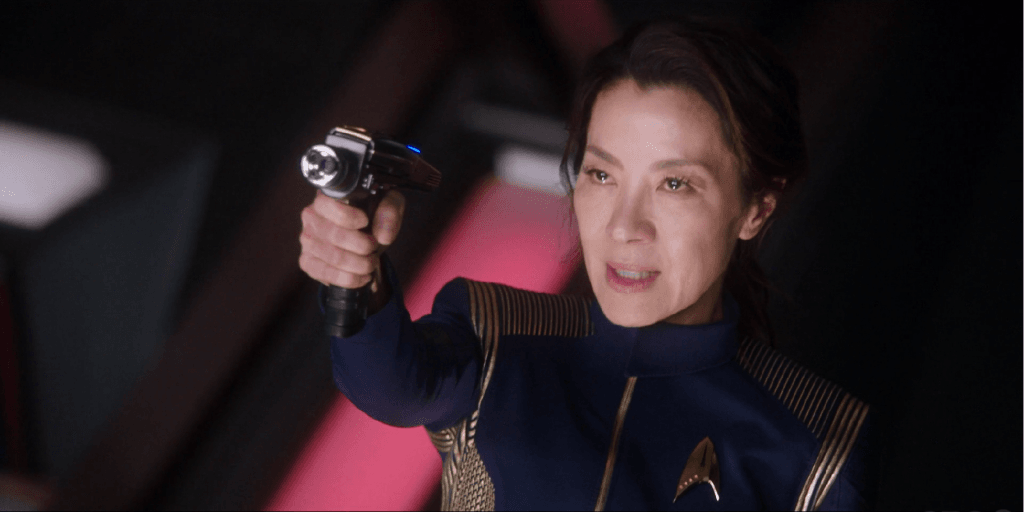 Another flashback, this time to seven years prior, shows Burnham’s first meeting with Georgiou, as the former beams aboard the Shenzhou alongside Sarek. As the Burnham and Georgiou of seven years ago arrive on the bridge, the scene transitions back to the present, as Klingon ships warp into the system and security removes Burnham from the bridge following her attempted mutiny.
Another flashback, this time to seven years prior, shows Burnham’s first meeting with Georgiou, as the former beams aboard the Shenzhou alongside Sarek. As the Burnham and Georgiou of seven years ago arrive on the bridge, the scene transitions back to the present, as Klingon ships warp into the system and security removes Burnham from the bridge following her attempted mutiny.
Aboard his ship, T’Kuvma addresses members of the High Council. Though some are dismissive, others are intrigued by his message of unity against the supposed threat posed by the Federation. At last, Starfleet reinforcements begin to arrive and T’Kuvma’s ship stops jamming communications. Immediately, they are hailed by the Shenzhou as Georgiou invites them to open a dialogue. Incensed, T’Kuvma opens fire.
During the battle, the Shenzhou suffers a number of hull breaches, including one that all but obliterates the brig (safe for the cell in which Burnham is being held). As the battle progresses, the Shenzhou is disabled, though the Klingon ship responsible breaks off before delivering a killing blow. The Shenzhou is caught in the gravitational pull of the binary star and begins drifting toward an asteroid. The crew braces for a collision when Admiral Anderson’s flagship, the Europa arrives, catching the Shenzhou in a tractor beam and towing her to safety. Anderson hails T’Kuvma, who agrees to a ceasefire, instructing Anderson to prepare to receive an envoy. Suddenly, the Europa is destroyed, and we see that she was rammed by a cloaked ship.
 Satisfied that Starfleet has suffered greater losses than they, the Klingon ships begin to warp out of the system – all save one, T’Kuvma’s flagship. T’Kuvma, who is beginning to fancy himself as Kahless reincarnated, sends a message to the surviving Starfleet vessels, informing them that they are alive only as witnesses of Klingon supremacy. Burnham is able to devise an escape from the brig. Meanwhile, T’Kuvma begins to retrieve the Klingon dead. On the bridge, Saru and Georgiou are devising a way to deliver a kill shot to T’Kuvma’s ship using the warhead from a photon torpedo. Georgiou decides that she will pilot a worker bee carrying the warhead while Saru effects sufficient repairs to allow the Shenzhou to evacuate. Burnham then arrives on the bridge, and recognizing Georgiou’s plan as a suicide mission, suggests an alternative: take T’Kuvma alive. The disgrace of this would devastate his status within the Empire, precluding his ability to present himself as a messiah. Failing this, Burnham offers to deliver the warheads in lieu of Georgiou.
Satisfied that Starfleet has suffered greater losses than they, the Klingon ships begin to warp out of the system – all save one, T’Kuvma’s flagship. T’Kuvma, who is beginning to fancy himself as Kahless reincarnated, sends a message to the surviving Starfleet vessels, informing them that they are alive only as witnesses of Klingon supremacy. Burnham is able to devise an escape from the brig. Meanwhile, T’Kuvma begins to retrieve the Klingon dead. On the bridge, Saru and Georgiou are devising a way to deliver a kill shot to T’Kuvma’s ship using the warhead from a photon torpedo. Georgiou decides that she will pilot a worker bee carrying the warhead while Saru effects sufficient repairs to allow the Shenzhou to evacuate. Burnham then arrives on the bridge, and recognizing Georgiou’s plan as a suicide mission, suggests an alternative: take T’Kuvma alive. The disgrace of this would devastate his status within the Empire, precluding his ability to present himself as a messiah. Failing this, Burnham offers to deliver the warheads in lieu of Georgiou.
Upon noticing that T’Kuvma’s ship is using a tractor beam to collect his dead, Georgiou instead has the warhead beamed onto a Klingon corpse. With T’Kuvma’s ship crippled, she and Burnham beam aboard to apprehend T’Kuvma. On the Klingon ship, Burnham is attacked by Voq while Georgiou confronts T’Kuvma directly. With Voq neutralized, Burnham goes to help Georgiou, but not quickly enough, as T’Kuvma manages to stab her through the heart. Burnham kills T’Kuvma as her mentor dies. Saru beams a grief stricken Burnham back aboard and the crippled Shenzhou is evacuated.
We then flash forward to Burnham’s court martial, where she is pleads guilty before being stripped of rank and sentenced to life in a Federation penal colony.
Let’s get the obvious out of the way first, shall we? This. Show. Is. Gorgeous. Whatever issues one might have with specific aesthetic choices (and believe me, I sympathize), there is no question that there was some serious time and money pumped into to the show’s sets and visual effects. And that time and money have more than paid off.
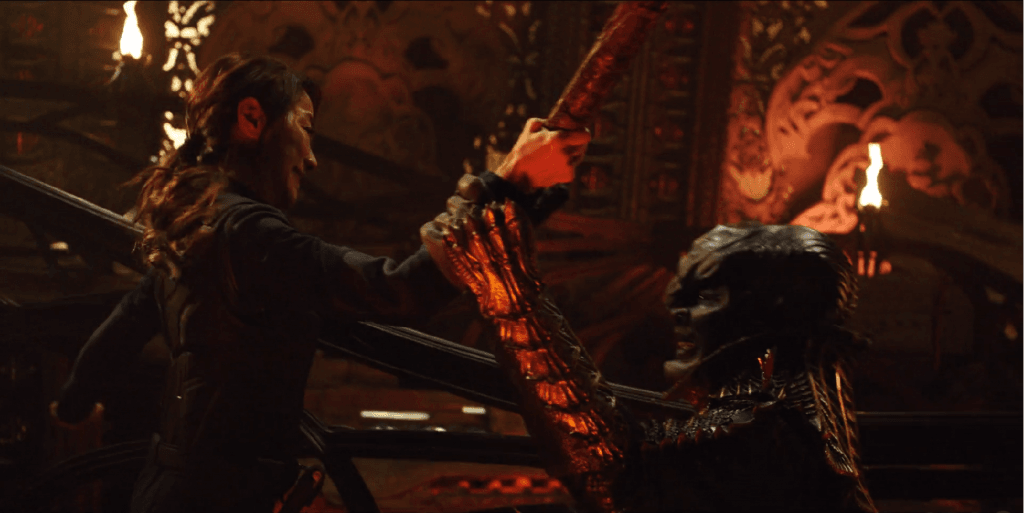
But as great as it is that the show looks good, that will only get you so far. The real question is the writing. And for the most part, that worked for me. From the moment we meet Georgiou and Burnham, it feels like ‘Star Trek’. As relentlessly cheesy as that cold open is and as much as signalling a starship with a literal line in the sand strains credibility, it’s refreshing that the first time we see any Starfleet officers in the series isn’t a battle or a chase scene or some other big action set piece, but rather a low key humanitarian mission. And in fact, that sequence in many ways is ‘Discovery’ in a nutshell. It hits a lot of the right notes, but the missteps stick out like a sore thumb.
A lot of the things that bothered me about these two episodes were relatively small things that as much as anything else owe to the fact that I’m a longtime fan. For example, I’m not crazy about the titular notion of a “Vulcan Hello.” I get what they were going for, I just have trouble buying into the idea that the Vulcans, of all people, would adopt “shoot first and ask questions later” as a policy with anyone, hostile or otherwise. And yes, I say that as someone who has seen ‘Enterprise’ and who by extension has a pretty good sense of just how… disagreeable the Vulcan High Command could be.
Likewise, it’s too early to really say whether or not this qualifies as a misstep, because it’s really going to depend on how they handle it going forward, but anytime Burnham starts talking about the Klingons, I am reminded of nothing so much as the way Lt. Stiles reacted to the Romulans in ‘Balance of Terror’. You remember him? He was the navigator who all but accused Spock of treason when the shared history of the Vulcans and Romulans was revealed. It also calls to mind moments from ‘Star Trek VI: The Undiscovered Country’ – itself one of the better ‘Star Trek’ films – in which our heroes voice attitudes toward the Klingons that stop just this side of outright racism. It’s a bit uncomfortable, given that she is meant to be our focal character. Though I have to wonder whether or not that’s an accident, as Fuller has referred to both ‘Balance of Terror’ and ‘Star Trek VI’ as important influences on ‘Discovery’, to say nothing of ‘Star Trek VI’ director Nicholas Meyer’s involvement with the series. And speaking of Klingons…
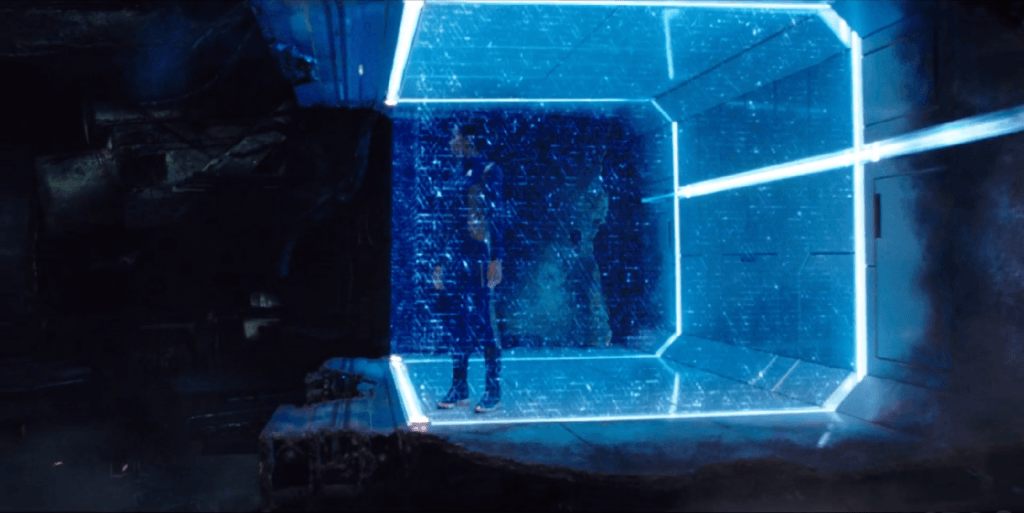
This is easily my biggest issue with ‘Discovery’ so far. The Klingons. I know Klingons, and I’m sorry, but these guys are not Klingons. Both visually and – perhaps more importantly – culturally, the Klingons seen on ‘Discovery’ are virtually unrecognizable to anyone familiar with prior incarnations of ‘Star Trek’. Aside from the language itself, virtually everything familiar about them is an informed attribute. For example, we’re told that they value honor, but T’Kuvma and the others sure don’t act like it. In fact, the feint they use to destroy the Europa was positively Romulan. And then there’s the complete 180 degree turns on cultural matters like their death ritual. I’m far from the first person on the internet to point this out, but the Klingons we’ve come to know view a dead body as an empty shell. They wouldn’t treat a body the way T’Kuvma’s crew does, and they certainly wouldn’t stick around to retrieve them after a pitched battle. In fairness, the intent, per the producers, seems to be that T’Kuvma represents an until recently isolated cultural group. But that certainly doesn’t come across on screen.
In fact, it’s interesting how easily some of the most controversial elements of ‘Discovery’ – the portrayal of the Klingons, Burnham having been raised by Sarek, and the visual discontinuity with the original series (which takes place a mere decade later) – could have been avoided. You want to tell a story about a Human Starfleet officer who was raised by a Vulcan ambassador, whose ship discovers a mysterious vessel crewed by hostile, isolationist aliens with whom she has a traumatic past and who promptly go to war with the Federation? Great. Sounds interesting. But by insisting that those aliens be Klingons (despite only paying lip service to everything that we’ve learned about them over the last thirty-five years) and, perhaps more vexingly, that the show be set in the mid-23rd century? You put yourself in a position where you have to either work within the bounds of what’s been established (within reason – despite the criticism that’s been leveled it for “ignoring continuity” over the years, ‘Enterprise’ largely pulled this off) or run the risk of hardcore fans crucifying you for your trouble. I’m not here to crucify anyone. I want to see ‘Discovery’ succeed. The point I’m trying to make here is that this is a self-inflicted wound. Take the bones of this story, but instead of leaning on the familiar, do something new. Set it in, say, the twenty-eighth century and make the antagonists an all-new alien race and suddenly a whole lot of the issues that I and others have raised would simply disappear. Besides, if you’re going to change this much just for the sake of doing something different, then why not do something altogether new? Wouldn’t that fit better with the spirit of discovery that underpins this franchise?
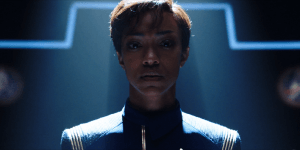
The real problem with all of that is not that they set the show in the 23rd century – in and of itself – nor that they used Klingons as the main antagonists – in and of itself – nor even the shoehorning of Sarek into the main character’s backstory – in and… oh, you get the idea. The issue is that after a while these all start to feel like a series of clumsy attempts to tie ‘Discovery’ to the original ‘Star Trek’. While it’s an understandable impulse, it also feels a bit awkward and forced. Compare it to comic book retcons that go out of their way to tie everything together regardless of whether or not it makes any organic sense and you’ll get an idea of what I’m talking about.
But bottom line, what did I think? At the end of the day, is the ‘Discovery’ premiere perfect? No, of course it’s not. But as much as some of the issues I’ve raised here might bother me on a nitpicky fanish level, none of them came close to being a deal breaker. While I recognize that this is a breathtakingly low bar to clear, based on what we’ve seen to date, ‘Discovery’ is far and away the best production to come out of ‘Star Trek’ since ‘Terra Prime’, the penultimate episode of ‘Enterprise’. (Don’t get me started on either the reboot movies or the ‘Enterprise’ finale. Just… don’t.) But more importantly, it also feels more like ‘Star Trek’ than the recent movies ever have. (Seriously, do not get me started.) It’s a promising start, and I’m eager to see where ‘Discovery’ goes from here.
Thank you for joining us, and more importantly, thank you for sticking with us throughout this two month countdown to ‘Star Trek: Discovery’! What did you think of the ‘Discovery’ premiere? Did it live up to your expectations or were you left wanting? Make sure you let us know in the comments! And while you’re at it, don’t forget to check out my friend and colleague Tony Schaab’s review of ‘The Vulcan Hello’!
Meanwhile, I’ll be enjoying a well-earned break as this column returns to its regular bi-weekly schedule. So be sure to check back in two weeks when we return with our coverage of… something. I honestly haven’t thought that far ahead. It’ll probably be a ‘Star Trek’ episode, though.
